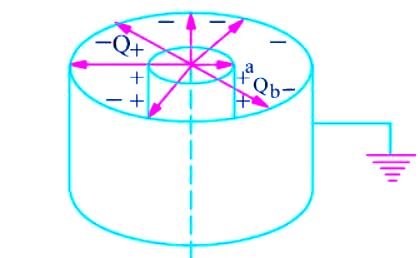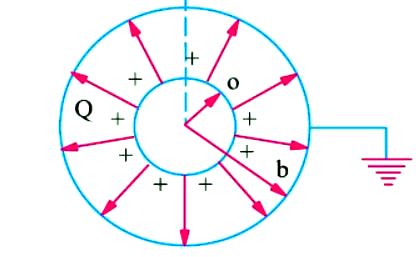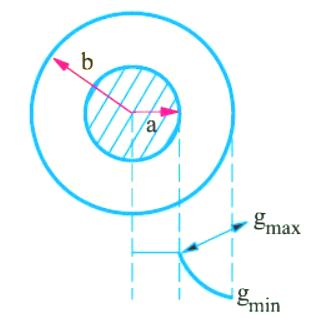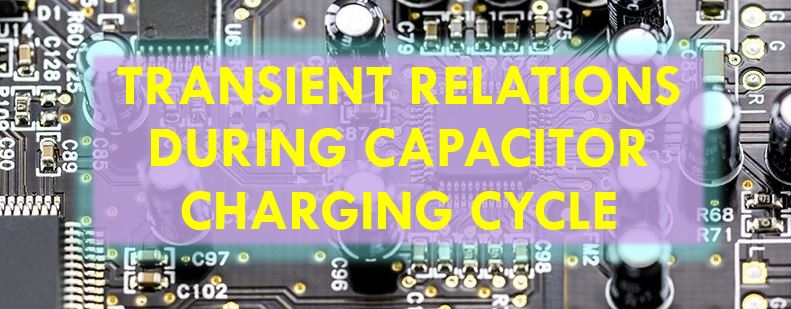Cylindrical Capacitor
A single-core cable or cylindrical capacitor consisting two co-axial cylinders of radii a and b meters, is shown in figure given below.



Let the charge per metre length of the cable on the outer surface of the inner cylinder be + Q coulomb and on the inner surface of the outer cylinder be − Q coulomb. For all practical purposes, the charge + Q coulomb/metre on the surface of the inner cylinder can be supposed to be located along its axis. Let εr be the relative permittivity of the medium between the two cylinders.
The outer cylinder is earthed. Now, let us find the value of electric intensity at any point distant x metres from the axis of the inner cylinder. As shown in Figure give below
AdBlock-2

consider an imaginary co-axial cylinder of radius x meters and length one meter between the two given cylinders. The electric field between the two cylinders is radial as shown. Total flux coming out radially from the curved surface of this imaginary cylinder is Q coulomb. Area of the curved surface = 2 π x × 1 = 2 π x m2.
Hence, the value of electric flux density on the surface of the imaginary cylinder is
![]()
The value of electric intensity is


The capacitance of l meter length of this cable is

In case the capacitor has compound dielectric, the relation becomes

The capacitance of 1 km length of the cable in μ F can be found by putting l = 1 km in the above expression.

Potential Gradient in a Cylindrical Capacitor
It is seen from the above cylindrical capacitor that in a cable capacitor

where x is the distance from cylinder axis to the point under consideration.
Now

From the above cylindrical capacitor, we find that

Substituting this value of Q in (i) above, we get

Obviously, potential gradient varies inversely as x.
Minimum value of x = a, hence maximum value of potential gradient is

Read article – Units of Resistivity
Visit NCERTplanet.com for NCERT solutions and Textbook downloads




